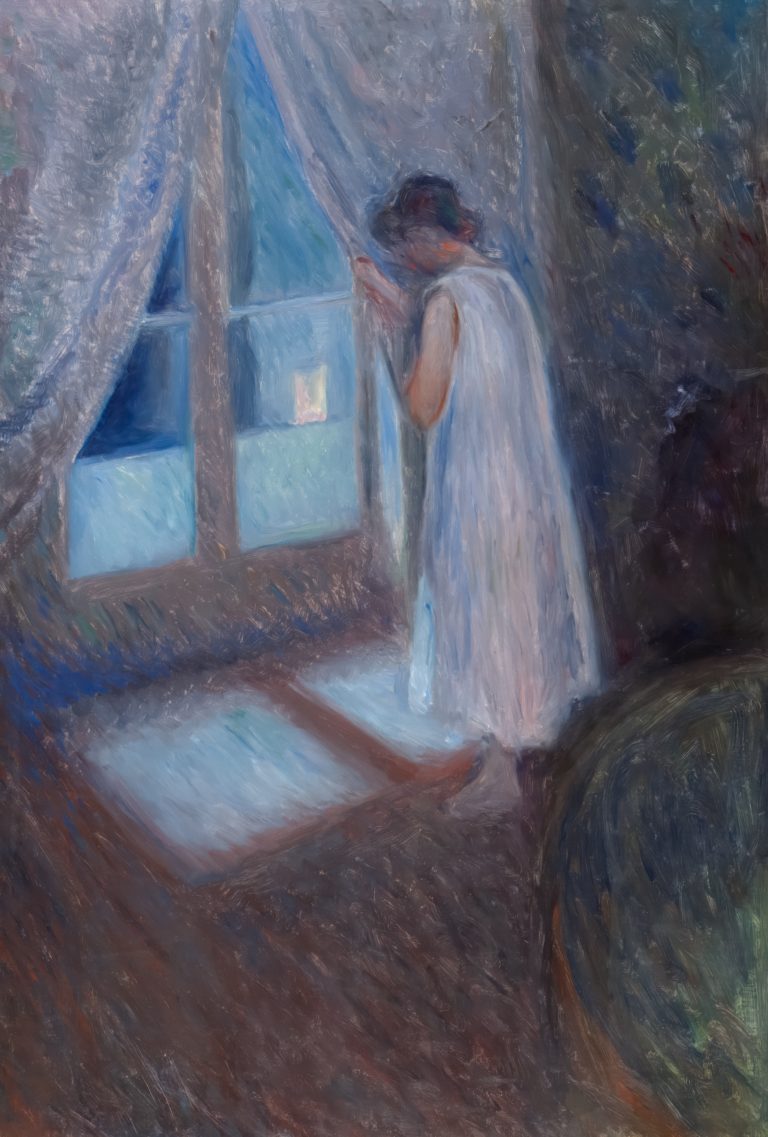A Deep Dive Into Cognitive Distortions and OCD

Cognitive distortions play a significant role in various mental health conditions, including Obsessive-Compulsive Disorder (OCD).
In this discussion, we delve into the relationship between cognitive distortions and OCD, with a particular focus on the intolerance of uncertainty.
This cognitive distortion often manifests as an overwhelming need for certainty and control, leading to rigid thought patterns and excessive emotional reasoning.
Understanding how intolerance of uncertainty impacts mindset and experiences is crucial for developing effective interventions and coping strategies for individuals living with OCD and other anxiety disorders and mental illness(es).
Understanding Cognitive Distortions
Many Cognitive distortions refer to systematic errors or biases in thinking that can distort one’s perception of reality. These distortions often involve interpreting situations in ways that reinforce negative beliefs or emotions, leading to maladaptive behaviors and emotional distress.
In the context of OCD, cognitive distortion (thinking error) can significantly exacerbate symptoms.
For example, individuals with OCD may engage in black-and-white thinking, viewing situations as either perfect or catastrophic, without considering the shades of gray in between. This can fuel obsessions and compulsions, as they strive for absolute certainty and control over their environment.
Understanding cognitive distortions is crucial in the context of OCD because it helps clinicians and individuals recognize the patterns of thinking that contribute to the disorder.
By identifying and challenging these distortions, individuals can gain more realistic perspectives on their thoughts and behaviors, ultimately reducing the intensity and frequency of OCD symptoms. Additionally, addressing thinking errors through cognitive-behavioral therapy (CBT) techniques can empower individuals to develop healthier coping mechanisms and improve their overall quality of life.
The Link Between Cognitive Distortions and OCD
The link between cognitive distortions (thinking error) and Obsessive-Compulsive Disorder (OCD) lies in the way individuals with OCD interpret and respond to intrusive thoughts and fears.
Irrational thinking such as catastrophizing, black-and-white thinking, overestimating threat and all or nothing thinking amplify the significance of these thoughts, leading to obsessive preoccupation and anxiety.
For instance, someone with OCD may catastrophize the consequences of not performing a particular ritual, believing that something terrible will happen if they don’t adhere to their compulsions.
This distortion magnifies the perceived threat, reinforcing the compulsive behaviour as a means of reducing anxiety. Similarly, black-and-white thinking can lead individuals to believe that they must achieve perfection in their rituals to prevent harm OCD, disregarding any evidence to the contrary.
Moreover, thinking errors like thought-action fusion can contribute to the misconception that having a thought about something harmful increases the likelihood of it occurring, further fuelling obsessive symptoms such as intrusive thoughts, rumination (emotional reasoning) and compulsive behaviours.
Overall, cognitive distortions play a central role in the maintenance of OCD symptoms by distorting the interpretation of intrusive thoughts and exaggerating the perceived need for compulsive actions. Recognizing and addressing these distortions is essential in developing effective interventions to manage OCD by serving as a mental filter to improve overall mental well-being.
Intolerance of Uncertainty
Intolerance of uncertainty refers to the psychological discomfort or distress experienced when faced with uncertain or ambiguous situations.
In the context of Obsessive-Compulsive Disorder (OCD), individuals with high levels of uncertainty find it challenging to tolerate the ambiguity inherent in everyday life.
They often seek excessive reassurance, engage in rituals, or ruminate excessively to reduce magical thinking, physical sensations and regain a sense of control.
For someone with OCD, uncertainty becomes intolerable because it triggers anxiety and fear of negative outcomes.
This can manifest in distorted thought patterns revolving around potential dangers or catastrophic events, such as contamination, unwanted violent thoughts to oneself or others, unwanted sexual thoughts or making mistakes in general.
Compulsive behaviors then emerge as attempts to neutralize these obsessions and alleviate the associated anxiety. These behaviors temporarily reduce distress but reinforce the belief that uncertainty must be eliminated at all costs, perpetuating the cycle of OCD.
For example, a person with contamination OCD may obsessively worry about being contaminated by germs and feel compelled to wash their hands repeatedly to alleviate this uncertainty. However, the relief is short-lived, and the cycle continues as the individual encounters new situations or triggers that evoke uncertainty.
Ultimately, intolerance of uncertainty fuels the maintenance of OCD by driving compulsive behaviors aimed at achieving certainty and control. Addressing this intolerance through cognitive-behavioral therapy (CBT) techniques, such as exposure and response prevention (ERP), can help individuals learn to tolerate uncertainty more effectively and reduce the grip of OCD on their lives.
Three Common Cognitive Distortions in OCD

In Obsessive-Compulsive Disorder (OCD), three common cognitive distortions contribute significantly to the maintenance of the disorder:
Overestimation of Cost
Individuals with OCD often overestimate the potential negative consequences of not engaging in compulsive actions or rituals.
They may believe that if they don’t perform their rituals perfectly or if they deviate from their routines, catastrophic events will occur.
For example, an OCD sufferer related to checking might overestimate the cost of not checking the stove repeatedly, fearing a house fire or harm to loved ones.
This overestimation reinforces the compulsion to check excessively, as it seems necessary to prevent these perceived catastrophes.
Overestimation of Likelihood
This distortion involves exaggerating the likelihood of a feared event happening. Individuals with OCD may believe that the likelihood of their feared outcome coming true is much higher than it actually is.
For instance, someone with contamination OCD may overestimate the likelihood of contracting a severe illness from touching a contaminated surface, despite evidence suggesting otherwise.
This overestimation fuels their anxiety and drives compulsive cleaning or avoidance behaviors to reduce perceived risk, even when the actual risk is minimal.
Underestimation of Self-Efficacy
Individuals with OCD often underestimate their ability to cope with uncertainty or manage distressing thoughts and feelings without resorting to compulsive behaviors.
They may lack confidence in their ability to tolerate uncertainty or believe they are powerless to resist their obsessive urges.
For example, someone with OCD related to intrusive thoughts might underestimate their ability to challenge these thoughts and resist engaging in mental rituals or reassurance-seeking behaviors. This underestimation perpetuates the reliance on compulsions as a means of coping with distress, reinforcing the cycle of OCD.
Addressing these cognitive distortions through cognitive-behavioral therapy (CBT), particularly techniques such as cognitive restructuring and exposure and response prevention (ERP), can help individuals with OCD challenge these irrational beliefs and develop more adaptive ways of thinking and behaving.
By recognizing and correcting these distortions, individuals can gradually reduce the severity of their symptoms and regain control over their lives.
Coping Strategies and Cognitive-Behavioural Therapy (CBT)
Coping strategies and techniques, particularly those derived from Cognitive-Behavioral Therapy (CBT), offer valuable tools for individuals with Obsessive-Compulsive Disorder (OCD) to manage cognitive distortions effectively.
Here are several strategies commonly used in therapy:
Mindfulness
Mindfulness techniques can help individuals with OCD develop awareness of their thoughts and feelings without judgment.
By practicing mindfulness, individuals learn to observe their cognitive distortions and obsessive thoughts without getting caught up in them.
This can help reduce the emotional intensity associated with these thoughts and create space for more rational responses.
Cognitive Restructuring
Cognitive restructuring involves identifying and challenging irrational beliefs and cognitive distortions.
Individuals with OCD work with a therapist to examine the evidence for and against their obsessive thoughts and develop more balanced and realistic interpretations of their experiences.
This process helps weaken the grip of cognitive distortion and reduce the frequency and intensity of obsessive thoughts.
Exposure and Response Prevention (ERP)
ERP is a cornerstone of CBT for OCD and involves gradually exposing individuals to situations or triggers that evoke anxiety or distress related to their obsessions.
Through repeated exposure without engaging in compulsive behaviors or rituals, individuals learn that their feared outcomes are unlikely to occur and that they can tolerate the associated discomfort. Over time, this leads to habituation and a reduction in OCD symptoms.
Behavioural Experiments
Behavioural experiments involve testing the validity of obsessive beliefs through real-life experiences.
Individuals with OCD work collaboratively with their therapist to design experiments that challenge their cognitive distortions and provide evidence contrary to their fears.
This process helps individuals develop more accurate beliefs and increase their tolerance for uncertainty.
Relapse Prevention
Relapse prevention strategies help individuals anticipate and manage setbacks in their recovery from OCD.
By identifying early warning signs of relapse and developing coping strategies to address them, individuals can maintain the gains achieved through therapy and prevent a return of symptoms.
These coping strategies and techniques empower individuals with OCD to challenge their cognitive distortions, reduce the impact of obsessive thoughts, and regain control over their lives.
It’s important for individuals to work closely with a qualified therapist experienced in treating OCD to tailor these strategies to their specific needs and circumstances.





